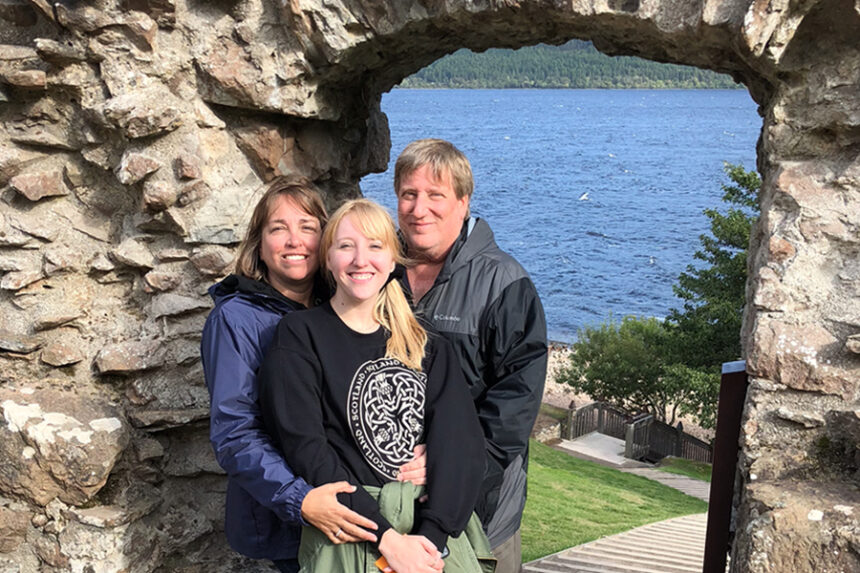In November 2022, Brian Stepien, 63, went to his primary care doctor for a simple reason: He needed his blood pressure medication refilled.
But UNC Health family medicine doctor Jeffrey Huang, MD, recommended he also have a physical since it had been almost a year since his last one. During the physical, Dr. Huang discovered a small lump on Stepien’s neck that turned out to be cancer.
“He started checking under my arms and neck, and lo and behold, there was a lump on the side of my neck about the size of a Chiclet,” Stepien says. “I had no idea it was there—I couldn’t see it from the side.”
Because the lump was firm and bigger than a fingertip, Dr. Huang suggested follow-up testing, which confirmed it was cancer. Thankfully, the early catch meant the tumor was still treatable.
“I never want to be an alarmist, but I do want to be a steward of good health,” Dr. Huang says. “It was serendipitous that the physical led to finding the cancer so Brian could get the treatment he needed.”
Head and Neck Cancer Is Often Caused by HPV
Stepien was referred to UNC Health head and neck cancer surgeon Wendell Yarbrough, MD. Head and neck cancer is a term for cancers that start in the lining of the inside of the mouth, throat and voice box. In Stepien’s case, the cancer started in his right tonsil and spread to a lymph node, causing the lump.
“Head and neck cancer is often found through neck lumps as it commonly spreads to the lymph nodes in the neck,” Dr. Yarbrough says. “At this point, while it’s small and painless, it is usually still curable. This was a really great catch from Brian’s primary care physician.”
There are two main causes of head and neck cancer: tobacco use and exposure to cancer-causing types of the human papillomavirus (HPV), the most common sexually transmitted infection in the United States. About 14 of the more than 150 strains of HPV can cause cancer, Dr. Yarbrough says.
“Around 90 percent of Americans have been exposed to HPV, and most clear it without issue. However, if you’ve been exposed to a cancer-causing type of HPV and don’t clear it, it can cause cancer anywhere from 15 to 40 years after exposure,” Dr. Yarbrough says.
Cancer-causing types of HPV do not usually cause symptoms until the cancer develops, so it can be difficult to know if you’ve been exposed.
HPV-Related Cancers Are on the Rise
Oropharyngeal (throat) cancers are now the most common HPV-related cancer in the United States, according to the National Cancer Institute—even more than cervical cancer.
“In the late 1990s, head and neck squamous cell cancer caused by HPV was unheard of, but now about 70 percent of oropharyngeal cancers in the U.S. are HPV-related,” Dr. Yarbrough says.
People who smoke and people older than age 65 used to be at the highest risk for head and neck cancer. However, the rise of HPV-associated cancers means that everyone could be at risk, Dr. Yarbrough says.
That’s why he says getting the HPV vaccination is key, as it can prevent HPV-related cancers.
Anyone between the ages of 9 and 45 can receive the HPV vaccine. It’s recommended that people get vaccinated before becoming sexually active, so they’re better protected if exposed to HPV.
How to Recognize Head and Neck Cancer
It’s important to know the common signs of head and neck cancer, which are:
- Neck lump or mass (these are usually painless)
- Persistent sore throat
- Hoarse voice
- Trouble swallowing/strange sensation while swallowing that doesn’t improve
- Bleeding from the mouth
Contact your doctor if you notice any of these symptoms.
“Treatment can be aggressive, so you want to catch it early and get as little treatment as possible to get the cure,” Dr. Yarbrough says.
Treatment for Head and Neck Cancer

Dr. Yarbrough says treatment for head and neck cancer most commonly includes a combination of chemotherapy and radiation treatment, surgery to remove the tumor or tumors—and sometimes all of the above.
Stepien received chemotherapy and radiation for several weeks, finishing in April 2023.
The radiation machine delivered the treatment to Stepien’s right tonsil and lymph nodes in the neck from different angles while he was lying down, wearing a custom mask to hold his head in place.
“It was tough mentally and emotionally to go through the treatment,” Stepien says. “But I know how lucky I am that Dr. Huang caught it when he did.”
Stepien responded well to treatment and is awaiting a follow-up appointment to confirm that the cancer is gone.
The Power of Preventive Medicine
Stepien’s story shows the power of seeing the doctor not just when you’re hurting or sick, but to get preventive care and screenings. Sometimes just a conversation with your doctor can set you on a path to better health.
“It can be inconvenient and time-consuming to come to the doctor,” Dr. Huang says. “However, if we hadn’t done Brian’s physical, I wouldn’t have been able to feel that lump on his neck. Especially as you age, it’s important to keep up with your routine primary care appointments and meet face-to-face with your doctor so they can do what they’re trained to do.”

